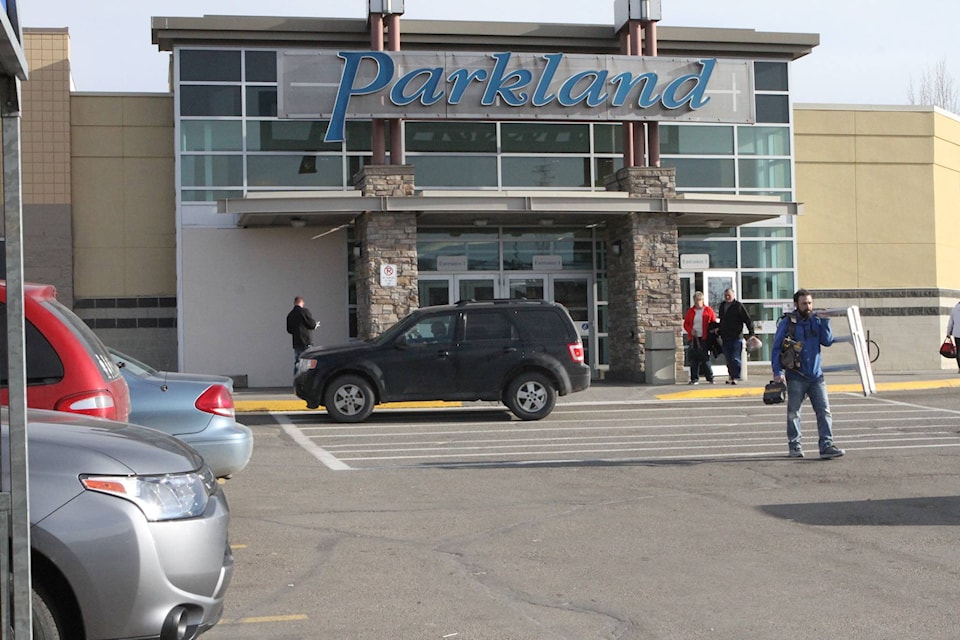Fifty years ago, on Nov. 3, 1970, there was a major boost to the retail sector in Red Deer and, consequently, to the city’s position as the predominant regional trading centre in central Alberta.
The Parkland Mall opened on the brow of the north hill. It was Red Deer’s first large-scale indoor shopping mall.
Red Deer had been building its positon as a regional retail hub for many years. In 1928, Eaton’s, one of Canada’s retail powerhouses, opened the first national chain department store in the city.
This was followed in 1939 by a larger new Eaton’s store, one that attracted even more shoppers from across the region.
The rapid growth of Red Deer in the 1950s and 1960s greatly enhanced Red Deer’s position as a retail hub as the number, diversity and size of businesses grew dramatically.
In 1961, another major chain department store, the Hudson’s Bay, opened in Red Deer. However, as the 1960s drew to a close, the local and regional economy hit the doldrums and fell into recession.
The agricultural sector was hit hard by things such as a rapid decline in the price of wheat. The oil and gas industry slumped.
The annual value of building permits in the city plunged between 40 and 50 per cent. The official population of Red Deer dropped for the first time in nearly 50 years, albeit only from 26,924 to 26,907.
Despite the challenging economic climate, the A.D. Gelmon Corp. announced the construction of a large indoor mall on Red Deer’s north hill. Its $4.5-million cost was only slightly less than the total of all the other building permits issued by the city that year.
The new mall was to contain more than 20 indoor stores, with Woolco, Safeway and Super City Drugs as the anchor tenants. At a time when parking was an ongoing problem in the traditional shopping areas, the new mall was to have parking spaces for an impressive 1,400 cars.
Parkland Mall was an immediate success. The managers estimated that 25,000 people turned out for the official opening on Nov. 3.
That was probably an exaggeration, as that would have been only slightly less than the entire population of Red Deer. Nevertheless, the merchants reported literally thousands of opening day sales.
The new mall also had an impact on municipal retail regulation.
For many years, Red Deer had a shopping bylaw under which stores were open late on Thursday evening, but closed every Wednesday afternoon.
The Parkland Mall put pressure on the city to rescind the bylaw and bring in much freer shopping hours.
The plebiscite on the shopping bylaw was held the day after the mall officially opened. Sixty-four per cent of the voters cast ballots to scrap the early closing bylaw.
Stores were soon open Thursday and Friday nights, as well as Wednesday afternoons. Some tried Saturday night openings, but dropped them because of relatively low customer traffic.
The Parkland Mall had a major impact on retail sales in Red Deer. Despite the recession, the estimated value of sales jumped at least 10 per cent, to more than $100 million. Red Deer clinched its position as the preeminent retail and commercial centre of central Alberta.
Over the next decade, Parkland Mall grew and prospered. In 1978, the mall doubled in size, with Sears being added as an additional anchor tenant.
The following years saw even more changes. A small sub-mall on the edge of the hill was demolished. A restaurant building was added on the west side of the parking lot. In 1994, Walmart took over the large Woolco store.
For a few years, new owners tried a rebranding of the shopping centre as the Red Deer Centre Mall. However, people quite liked the Parkland name. They also thought of the mall as being on the north side, not in the centre of the community.
Consequently, in 2005, Morguard Investments, the mall managers, changed the name back to Parkland Mall. The whole complex was given a major refurbishment and improvement.
Alterations have continued over the past several years, with the departure of Sears and Safeway and the addition of several new businesses.
Today, Parkland Mall boasts more than 75 stores and services and remains a regional shopping centre, not only for the city of Red Deer, but also for central Alberta as a whole.
Red Deer historian Michael Dawe’s column appears Wednesdays.
